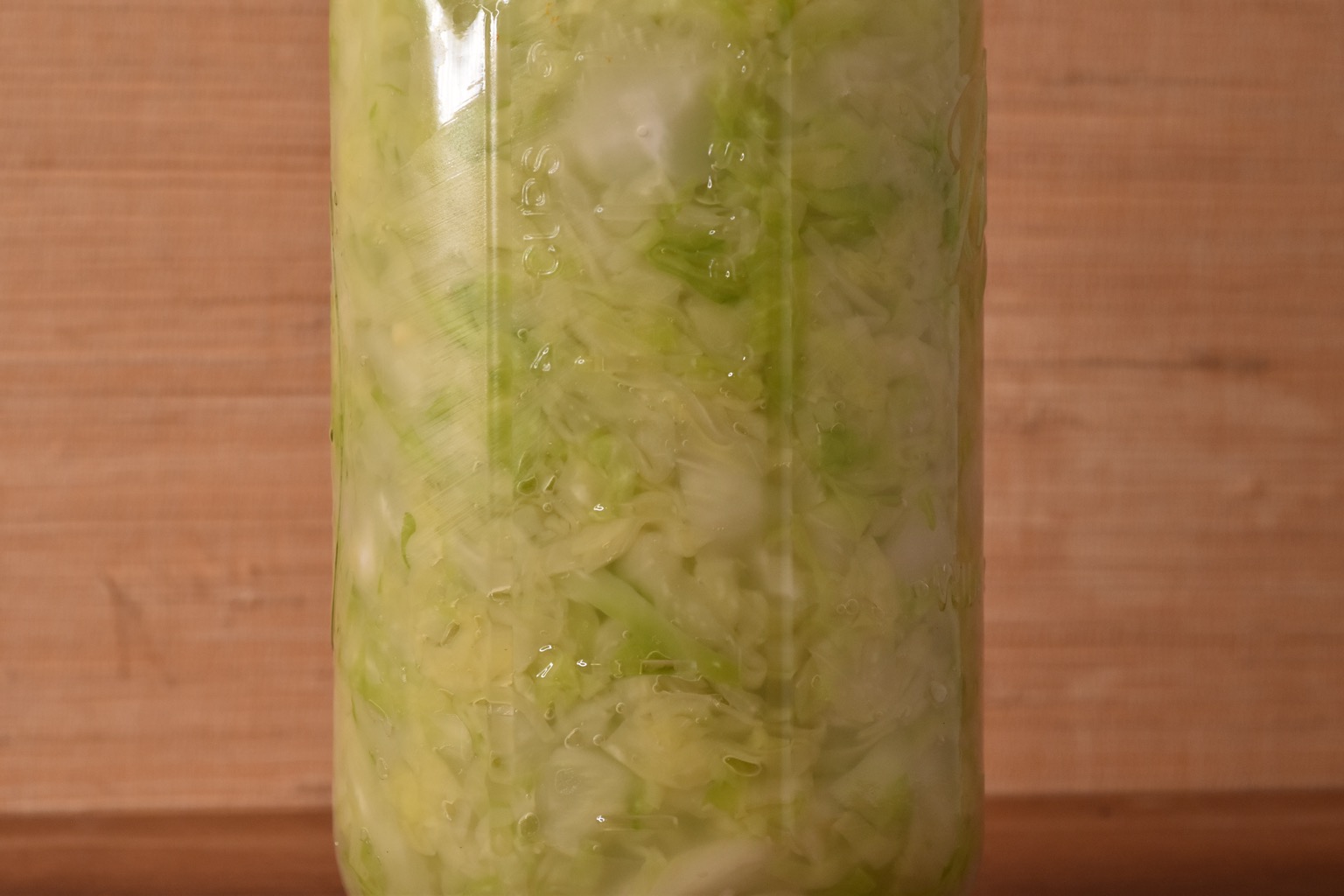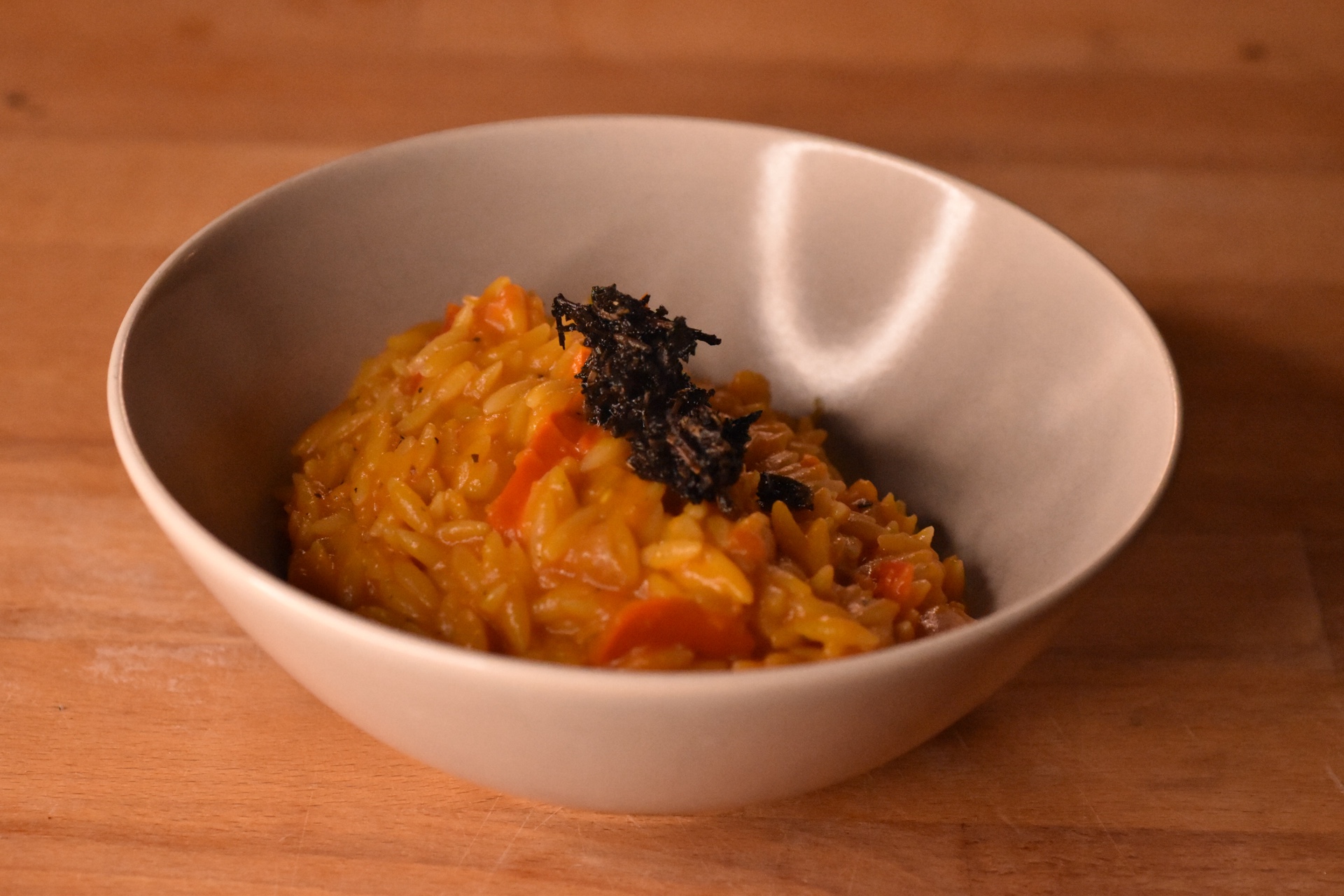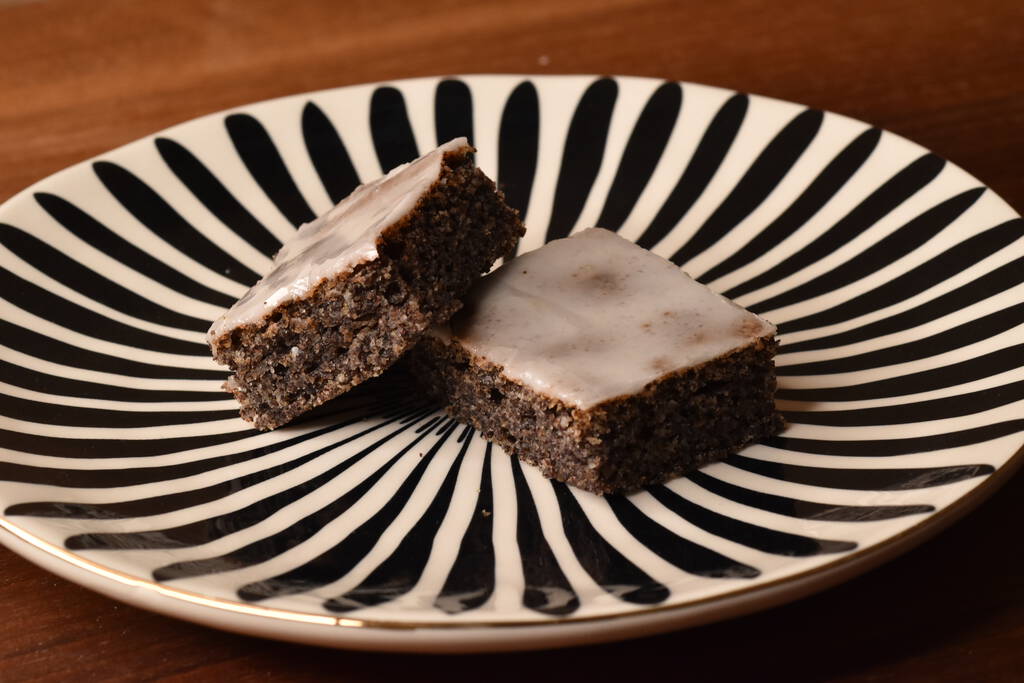
Sauerkraut (fermented cabbage) is very easy to make, and a great side dish for a lot of austrian food. It is often served with some meat and potatoes or dumplings. Though you can get creative with it and use it for a lot of other things as well.
Ingredients
- cabbage
- salt (2% of cabbage weight)
- fermentation yar
Instructions
Weight the cabbage. You will need 2% of its weight in salt. Measure it and put it aside. Quarter the cabbage and remove the stem. Slice the quarters as thinly as you possible can. The more effort you put into this step the less effort the next one will be.
Once all is cut, mix it with the salt. Let it rest for about 15 minutes. Now start to crush the cut cabbage with your hands. You really want to crush it, massage the salt into it and in the end squeeze out its liquid. In the end you want enough liquid that the cabbage is covered in its own liquid. This process can take a while. The finer you cut the cabbage, the easier it will be.
Once you got enough liquid, place everything in a fermentation yar. Ensure that everything is submerged into liquid and that it stays that way. If you have them, use fermentation weights to push the cabbage down. If you don’t have those you can use water filled plastic bags or cling film instead.
Note that this is the one and only crucial step in this process. If cabbage is exposed to air, it most likely will mold, and you have to start over.
Close the fermentation jar loosely. Note that all fermentations will produce gas. If you close it tight the jar can explode. Let the jar sit in a dark spot at room temperature for 7-14 days. The longer you wait the more acidic the Sauerkraut will become.
After that time you can place the jar in the fridge. It will hold up for months there. Note that once the initial fermentation is over there should be enough acidity in the cabbage to prevent mold when stored in the fridge. You do not need to submerge it any more.

Tips
- Get the cabbage to room temperature before starting. Crushing really cold cabbage is a pain for your hands.
- Check that no cabbage is exposed to air after a day or so. If it is, remove it and make sure that not more will get exposed during the next days of fermentation.




